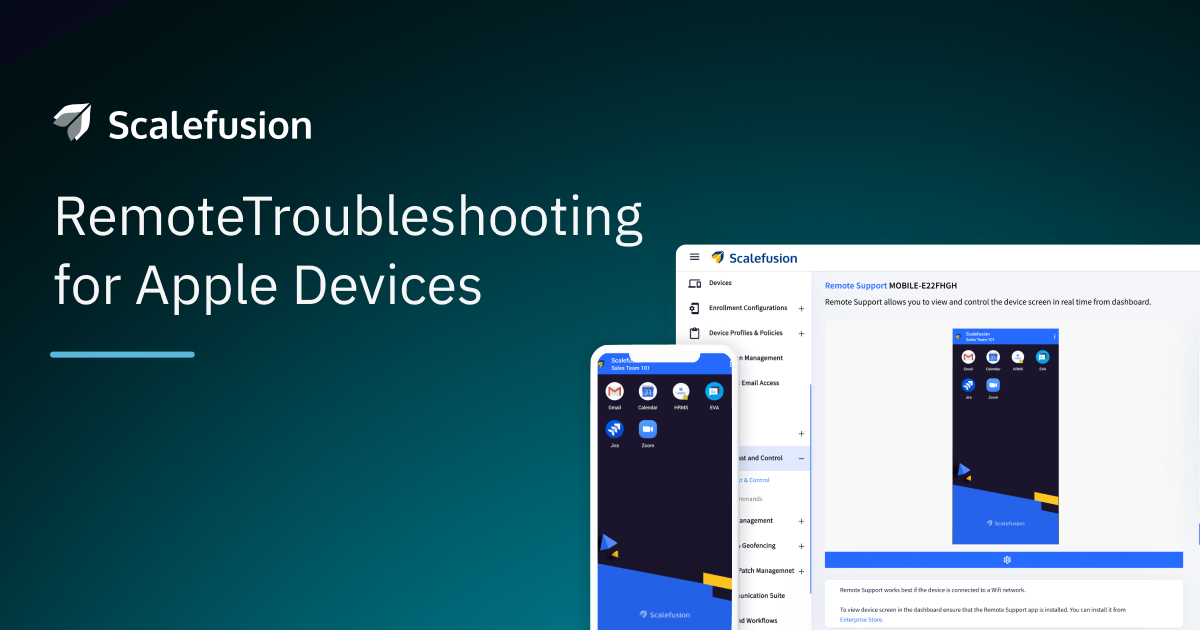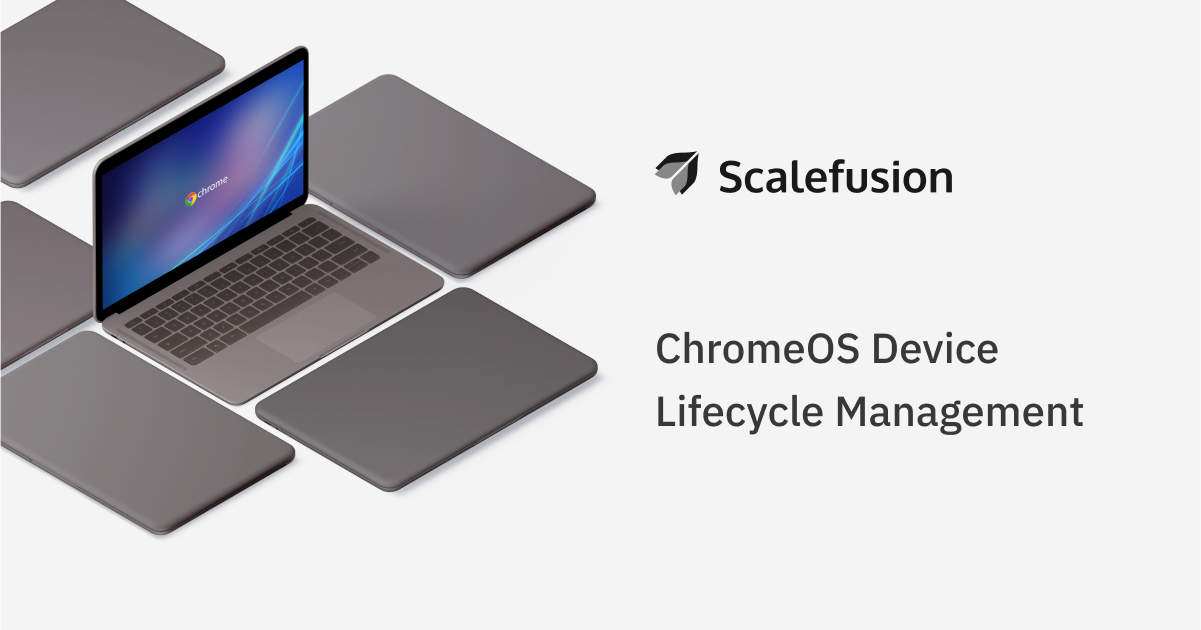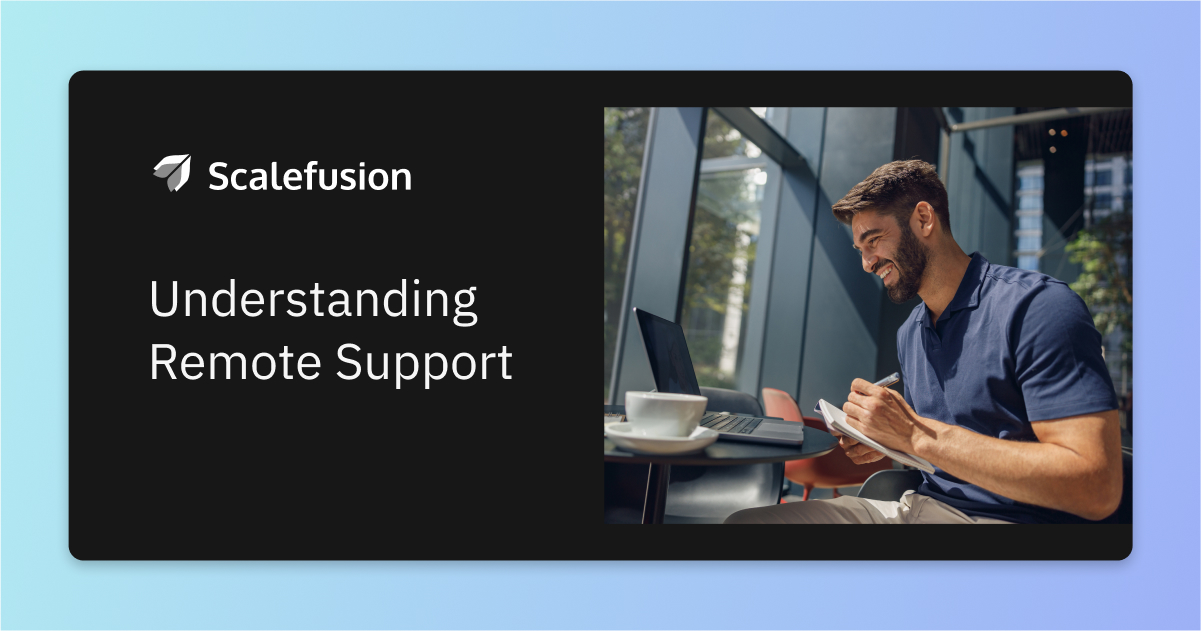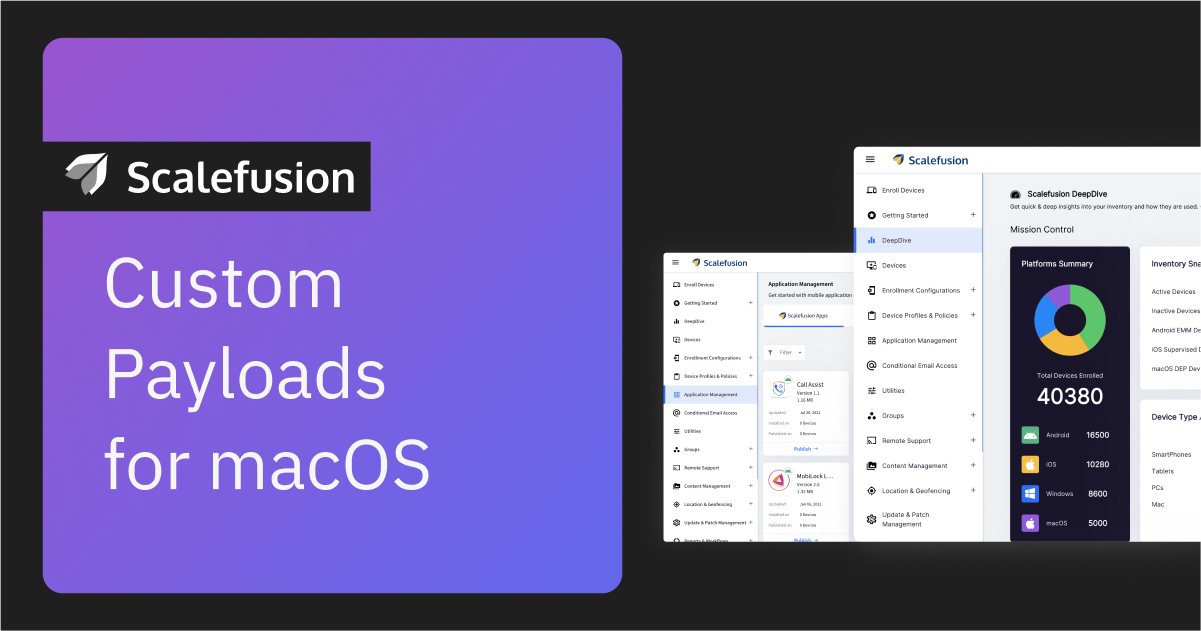Imagine you’re an IT professional on a holiday. Before you leave for the trip, you take care of all the tasks, and now you have nothing to worry about. But wait! Suddenly your phone rings, and it’s from your office about some troubleshooting issue. What do you do? This is where mobile device management and mobile application management come into the picture.
MDM and MAM solutions are here to stay. In fact, according to a recent study[1], the global mobile device management market size is projected to reach $16.33 billion by 2026. That’s why businesses need to understand their importance for streamlined operations and productivity.
In this blog post, we will explore the difference between MDM and MAM solutions and how organizations can leverage them for uninterrupted workflows.
What is Mobile Device Management?
Mobile device management is a solution that helps IT teams manage and monitor corporate-owned or BYO devices. MDM stays with your business devices from the enrollment stage through the entire management lifecycle. The main benefit of MDM is its strong capabilities. It can provide granular control over the entire device and, therefore, superior security.
Key features of MDM:
- Over-the-air device enrollment
- Pushing applications to devices
- Remote monitoring and troubleshooting
- Managing smartphones, laptops, tablets, and other endpoint devices
- Remotely locking devices
- Wiping device data
What is Mobile Application Management?
Mobile application management is all about managing and monitoring public or business-related applications. Every employee needs some apps to execute their work-related tasks. MAM solutions publish and push these applications to the end devices.
MAM offers numerous benefits to businesses, but these are two essential benefits of mobile application management. First, it enables more granular control on the application level. Moreover, the end users do not have to worry about the safety of those applications, as MAM already looks after them.
Key Features of MAM:
- Application management
- Monitoring application usage
- Securing apps
- Publishing and pushing apps to the devices
- Blocking unallowed applications
MDM vs. MAM: A Comparative Analysis
The difference between mobile device management (MDM) and mobile application management (MAM) lies primarily in their scope and focus. While MDM provides broad control over the entire device, MAM offers a more granular approach by focusing on the applications.
A) Scope of Control
- MDM: Manages the entire device, ensuring extensive security and policy enforcement across all aspects of the device. This includes controlling hardware functionalities, installing and updating software, and ensuring the device adheres to company policies.
- MAM: Manages individual applications, providing targeted control over app behavior and data security. This is particularly useful when only specific corporate apps need to be managed without affecting the user’s personal data and apps.
B) Flexibility and Implementation
- MDM: Best suited for corporate-owned devices and BYOD policies where the organization needs full control over the device. This includes settings, security protocols, and software installations, making it easier to maintain a standardized operating environment.
- MAM: Offers greater flexibility for mixed-use scenarios, where employees use their devices for both personal and work purposes. MAM focuses on securing corporate data within specific applications, reducing the need to manage the entire device.
C) Security and Compliance
- MDM: Provides strong security by enforcing device-wide policies, including password requirements, encryption, and remote wipe capabilities. This ensures that all aspects of the device are compliant with organizational security standards.
- MAM: Enhances security at the application level, enabling IT administrators to enforce policies that protect corporate data within apps. Features like app wrapping and secure containerization ensure that sensitive information remains secure even if the device is compromised.
D) Data Management
- MDM: Ensures that all data on the device, whether personal or corporate, is managed and secured according to the organization’s policies. This holistic approach can be beneficial for regulatory compliance.
- MAM: Focuses specifically on corporate data within applications, allowing personal data on the device to remain unaffected. This distinction is crucial in respecting user privacy while maintaining security over sensitive corporate information.
E) Cost Efficiency
- MDM: Typically requires more extensive infrastructure and management resources, as it involves comprehensive control over a wide range of devices. The initial setup and ongoing maintenance can be more costly, but it provides a high level of security and management.
- MAM: Can be more cost-effective, especially in environments where managing the entire device is unnecessary. By focusing on application-level security, organizations can reduce costs associated with device management while still protecting corporate data.
F) User Experience
- MDM: Enhances user experience by providing a secure and consistent operating environment across all devices. This ensures that all corporate devices function optimally and adhere to organizational policies, reducing the risk of security breaches and operational inconsistencies. Employees benefit from having standardized devices with pre-configured settings and applications, which can improve productivity and reduce IT support issues.
- MAM: Offers a better user experience by allowing personal use of the device to remain unaffected. Employees can use their devices freely for personal activities while the corporate apps are secured and managed separately.
G) Deployment and Scalability
- MDM: Offers effective deployment and scalability options, ensuring that all devices within the organization are uniformly managed and secured. This comprehensive approach can handle diverse device types and operating systems, making it ideal for organizations that require consistent security and policy enforcement across all devices.
- MAM: Easier to deploy and scale as it focuses on applications rather than devices. This makes it simpler to extend management capabilities across a growing number of users and apps without the need for extensive infrastructure changes.
Additionally, features like app configuration, silent updates, and application rollout further streamline the process. These functionalities ensure that applications are correctly set up, kept up-to-date without user intervention, and efficiently distributed to all relevant users, enhancing the overall efficiency and ease of management.
H) Practical Applications
- MDM: Ideal for industries where devices are company-owned and require extensive control, such as logistics, healthcare, and retail. MDM is also beneficial for organizations with strict compliance requirements, ensuring that all devices meet regulatory standards.
- MAM: Suitable for organizations where specific applications need to be managed and secured, allowing employees to use personal devices for work purposes without compromising overall device management.
MDM vs. MAM: A Comparison Table
Let’s understand more with this comprehensive MDM and MAM comparison chart.
| Feature | Mobile Device Management (MDM) | Mobile Application Management (MAM) |
| Scope of Control | Manages the entire device | Manages individual applications |
| Security | Device-wide policies, encryption, remote wipe | App-specific policies, secure containerization |
| Deployment Complexity | Comprehensive setup for entire devices | Focused setup for applications |
| Scalability | Requires significant infrastructure for large-scale deployment | Easier to scale with application-level control |
| User Experience | Standardizes device settings for consistency | Allows personal use while securing corporate apps |
| Cost Efficiency | Cost-efficient for device-level control | More cost-effective for application-level control |
| Data Management | Manages all data on the device | Focuses on corporate data within applications |
| Use Case | Ideal for corporate-owned and BYO devices needing full control | Best for environments focusing on specific app security |
MDM vs. MAM – Which One is Right for You?
Choosing between MDM and MAM depends on your organization’s specific needs and goals. Understanding the MDM and MAM differences is essential to making an informed decision. If you need comprehensive control over all company devices, MDM might be the better choice.
MDM allows for enforcing security policies, managing hardware functionalities, and ensuring compliance with corporate standards. MDM provides extensive device-level control, which is particularly beneficial for organizations that utilize corporate-owned devices or have stringent security requirements.
On the other hand, if your focus is on securing and managing only specific applications without impacting the overall device, MAM could be more suitable. MAM offers a more flexible approach, especially for environments where employees use personal devices for work purposes.
This allows IT administrators to manage and secure corporate apps without interfering with personal use, providing a better user experience. When conducting an MDM features comparison with MAM, consider factors like deployment complexity, scalability, and the balance between device and application-level management to determine the best fit for your organizational needs.
Unlock Seamless Mobile Device Management with Scalefusion
Why choose between MDM and MAM when Scalefusion offers both in a single, unified dashboard? With Scalefusion, businesses can harness the power of comprehensive mobile device management alongside granular application control, ensuring both device and app-level security.
Scalefusion’s strong MDM features—including device enrollment, remote wipe, and compliance monitoring—enable effective management and monitoring of all devices within your organization. Streamline your operations, enhance security, and boost productivity with Scalefusion’s seamless integration of MDM and MAM capabilities, tailored to meet the diverse needs of modern businesses.
Get in touch with our experts for a demo. Sign up for a 14-day free trial.
Reference:




